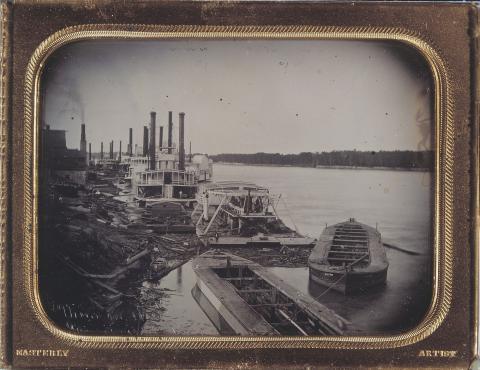May 25 Wednesday – Sam wrote another “Assistant’s Column” in the Journal [MTL 1:2]. A notice first ran in the Journal: “WANTED! AN APPRENTICE OF THE PRINTING BUSINESS. APPLY SOON.” The ad ran for two weeks. Wecter concludes this date marked Sam’s departure from Hannibal [Wecter 263]. Sam had promised his mother that he would abstain from cards and liquor [Wecter 262]. By this time Sam was in St. Louis to find his way in the world. Paine writes he took a night boat to St. Louis. Sam likely stayed with his sister Pamela and found work as a typesetter. He vowed never to let a place trap him again.
Sometime in May or June of 1853 seventeen year old Sam Clemens left home for the first time. He departed the small Mississippi River town of Hannibal, Missouri, later reflected in stories of Tom Sawyer and Huckleberry Finn, boarded a packet steamer bound for St. Louis, and began a life of travel. Packet steamers were vessels that transported both freight and passengers. Some packets were faster but not so reliable; some were larger but also slower; some were more luxurious, but carried less freight. With the grace of swans on a highway that cost nothing to build, such boats would figure large in Sam’s life. Steamer Biographies
Sam likely stayed with his sister Pamela and found work as a typesetter for the St. Louis Evening News. He vowed never to let a place trap him again. St. Louis in the summer of 1853 was a burgeoning city of 100,000 souls, the largest city of the West. The city offered Western freedom together with many of the luxuries and affectations of the East. For a young man from Hannibal, such a city must have been dazzling. Sam had kept plans secret from his family, to work in St. Louis long enough to make fare to New York City. Sam had read stories about the World’s Fair and the Crystal Palace, and he’d included them in his Journal.
See The Life of Mark Twain: The Early Years, 1835-1871, page 76
